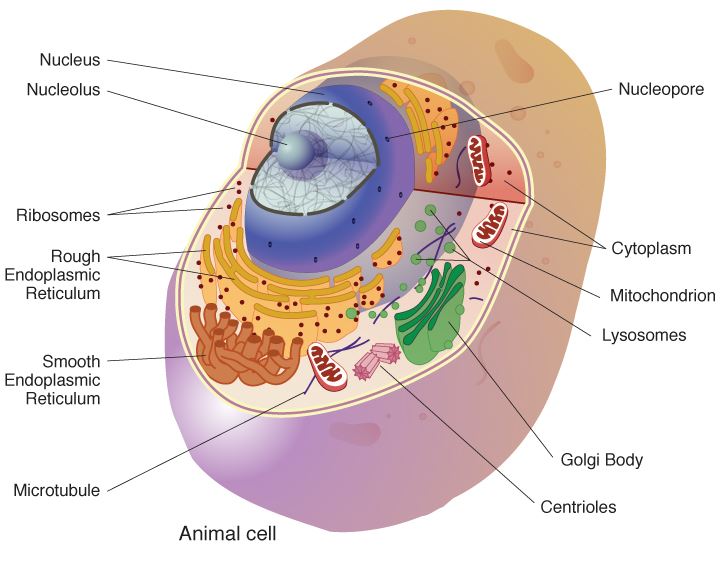Cell Biology
Cell biology overview
Cells are the basic structural and functional units of all known living organisms. Thus, the studies of cells can contribute to an integrated understanding of tissues and organisms. Cell biology is a field of science that focuses on the study of cells properties, including their physiology, their structure and function, and their life cycle. Mitosis and meiosis are two types of fission that cells replicate genetic material in preparation for cell division. Body cells contain two sets of chromosomes (one set from each parent). It is very important to understand the components of cells and how cells work because it is the fundamental of all biological sciences and is essential for research in cancerization, and other diseases.

Antonie van Leeuwenhoek firstly described the apparent movement of live cells. Afterwards Robert Hooke's first observed the plant-cell walls in slices of cork. In the 1830s, plant scientist Matthias Schleiden and animal scientist, Theodor Schwann, provided the first clearly stated definition of the cell. They thought that all living creatures, both simple and complex, are made out of one or more cells, which are the structural and functional units of life.
Cell structure
Prokaryotes and eukaryotes are two fundamental classifications of cells. The major differences between the two include presence and/or absence of organelles, size, the way in which they reproduce, and the number of cells. Animal, plant, fungi, and protozoa cells consist of eukaryotic cells, all of which have a nucleus enclosed by a membrane, with various shapes and sizes. Prokaryotic cells including bacteria and archaea, are lack of enclosed nucleus and some organelles. They are the smallest form of life and much smaller than eukaryotic cells. Cell biology studies typically focus on eukaryotic cells whereas prokaryotic cells are the focus of microbiology.
Cellular processes
Growth and development: The growth and development of the cell are essential for the maintenance and survival of the organisms. The cell goes through the steps of the cell cycle including G1, S, G2, and M phases and is regulated by a series of signaling factors and complexes such as cyclin-dependent kinases and p53. When the cell is found to be damaged or altered, it undergoes cell death, either by apoptosis or necrosis, to eliminate the threat it causes to the organism's survival. Another cellular process includes transport (the movement of molecules into and out of cells), autophagy (the process whereby cells "eat" their own internal components or microbial invaders), and adhesion (holding together cells and tissues).
Apoptosis: Apoptosis is a highly regulated and controlled process of programmed cell death that occurs in multicellular organisms. Characteristic cell changes including blebbing, cell shrinkage, nuclear fragmentation, chromatin condensation, and chromosomal DNA fragmentation. In addition, it plays an important role in developing process such as the separation of fingers in a developing human embryo.
Necrosis: Necrosis is an unregulated process of digesting cellular components that does not follow the apoptotic signal transduction pathway. It is a form of cell injury caused by factors external to the cell or tissue, such as infection, toxins, or trauma. Necrosis results in the loss of cell membrane integrity and an uncontrolled release of products of cell death into the extracellular space.
Autophagy: Autophagy is a biological process by which damaged organelles and macromolecules are degraded and recycled for cell survival and proliferation under physiological conditions. The process of autophagy mainly includes nucleation, elongation, docking and fusion, and degradation. Nucleation refers to the formation of bilayer lipid membranes and elongation refers to its expansion. The docking and fusion process means the fusion of autophagosome with lysosomes. Macroautophagy, microautophagy, and chaperone-mediated autophagy (CMA) are three commonly described forms of autophagy. In diseases, autophagy plays a dual role in many diseases including cancer. It has been seen as an adaptive response to various stresses, which promotes survival, whereas in other cases it appears to promote cell death in association with apoptosis.
References
- "Cell Biology | Learn Science at Scitable". Nature. Retrieved 2018-06-10
- "The Morphology of Eukaryotic Cells: Shape, Number and Size". YourArticleLibrary.com: The Next Generation Library. 2014-03-19. Retrieved 2015-11-2.